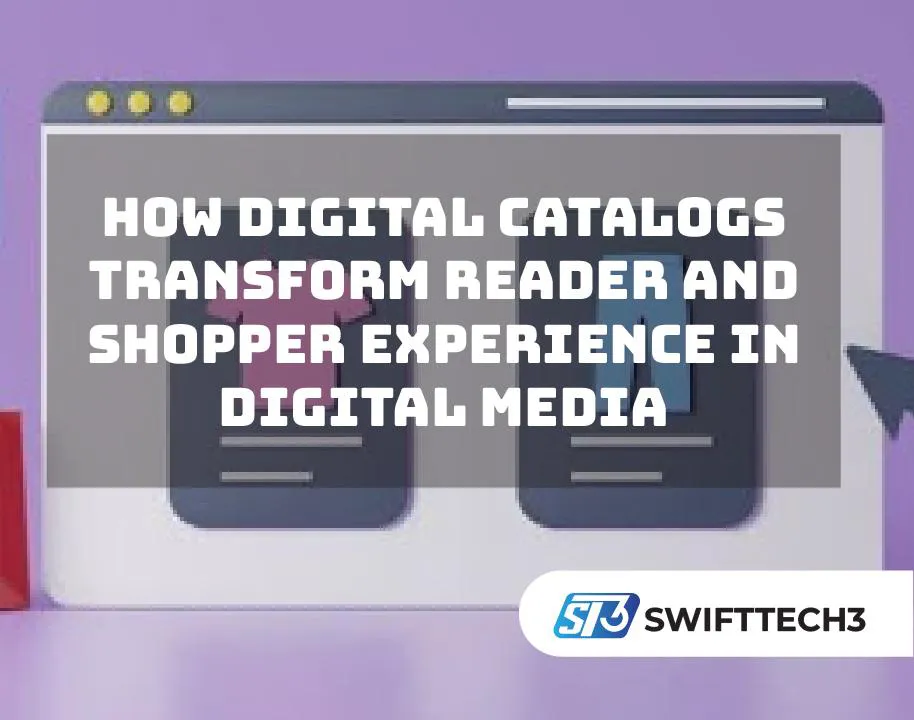Decade-after-decade, the manner of people browsing, shopping, and discovering products has been completely redefined. No longer does one envision the world of inspiration as a printed catalog. Today, the very same thrill has been transferred to the Web but with obvious advantages such as speed, intelligence, and interactivity of a much higher level.
One could say digital catalogs have transformed traditional browsing for the modern era. They’re not just product displays but engaging presentations that connect emotionally with viewers. Readers can explore and make a purchase within just a few clicks after discovering a product.
From Print to Interactive: A New Kind of Storytelling
Traditional print catalogs, although visually appealing, had their limitations. After printing, they couldn’t be updated, modified, or monitored. However, digital catalogs are like living, breathing pieces of media that can be updated anytime. They use the combination of visuals, motion, and interactivity to attract users in a way that print cannot.
Think of a page-turning book where the pages are videos, animations, or clickable lookbooks. Any product image can be made bigger, turned, or a short clip can be shown to give a real-life view of the item. Instead of viewing static photos, users get an experience that is both personal and up to date.
Their beauty alone is not the only reason for this transformation, it actually helps to establish stronger connections. By giving stories via digital catalogs, brands can not only show the products but also take customers through moods, lifestyles, and values. That emotional attraction may be the reason why a customer is deciding to scroll past or to click “add to cart”.
How Readers Experience Content Differently
Digital catalogs have changed the meaning of “browsing” for readers. The experience is no longer a passive one. Every interaction from a simple hover effect to a clickable product link gives the user the feeling of being involved.
Readers can zoom in to view details, click for more information, or save their favorite products for later. Since digital catalogs are fully responsive, they adjust smoothly to any screen size—whether it’s a tablet on the couch or a phone during a morning commute.
Such smoothness also implies that brands can keep on updating and refining their catalogs. Price changes, seasonal promotions, or new arrivals can be added at the very moment. Readers always get to see the latest version without the need for a reprint. It is dynamic, up-to-date, and always relevant.
Turning Shoppers into Explorers
To consumers, a digital catalog is not simply a tool for browsing but rather an entire funnel experience. It retains the delight of discovery while providing the ease of e-commerce.
Users don’t feel like they’re just scrolling through an online store. Instead, they explore a visually curated space that feels immersive and editorial. A catalog may start with a lifestyle image and then smoothly guide users to the collection featured in that photo.
The most significant change is that contemporary catalogs are shoppable. Users see a product and, in a flash, they can buy it without leaving the experience. There are no additional tabs, no awkward transitions, just a seamless connection between getting inspired and taking action. Such a merger shortens the customer journey and, therefore, the likelihood of conversion goes up.
In the middle of this evolution lies a simple truth: brands that know how to publish online with tools that merge design, data, and shopping functionality are already shaping the future of digital commerce.
Why Digital Catalogs Win in Engagement
Engagement is what keeps modern marketing alive. The time that a reader spends on your content is of utmost importance and digital catalogs are masters in holding that time.
They do not have the typical scrolling, but rather, a guided navigation. Instead of pop-up ads, interactive storytelling is offered. When users take charge of their own journey by jumping from one page to another, zooming in, or watching product videos, they are, without a doubt, spending more time on the site.
Such conduct leads to the creation of valuable data. The brands have the ability to know precisely what consumers are attracted to: which products receive the most clicks, which pages have the highest performance, and where users drop off. These revelations empower marketers to the point of being able to redesign, change the layout, and optimize the content for the next issues.
Success in print was measured by the number of copies distributed. In digital, success is measurable in engagement, conversion, and retention, and all of that can be done in real-time.
Bridging Content and Commerce
Digital catalogs are pretty much the magic when it comes to how they combine content and business. They are basically editorial experiences that are neat, immersive, and mostly look like digital magazines, but function like e-commerce tools.
If a catalog is built properly, it does not seem like the promotion of sales. Instead, it seems like discovery. The storytelling approach generates an emotional background: for example, a summer collection could be supported by bright lifestyle pictures and a travel vibe; a home decor line could get people to feel the warmth and comfort through the visual tone.
So what is the outcome? Customers are not only purchasing the products but also the lifestyle. The effortless combination of editorial inspiration and transactional opportunity is what makes digital catalogs extremely influential in the contemporary digital media mix.
The Role of Personalization
Digital catalogs are not only stunning, but they are also quite clever. With the use of cutting-edge technology, they can customize each user’s preference, prior behavior, or even location.
As an example, a person surfing the web from Paris might get the content in French with the prices in euros, whereas the one in New York might get the prices in the US dollars and the product that is in season. These tiny personal touches upraise the feeling of being relevant and having a connection.
Personalization also makes recommendations smarter. If a user shows interest in a specific product category, the catalog can automatically suggest similar items or matching accessories. This creates a helpful feedback loop between the brand and the consumer, making the experience feel supportive rather than pushy.
According to the U.S. Bureau of Economic Analysis, the digital economy continues to expand rapidly, driven by personalization, user data, and real-time interactivity that define the modern shopping experience.
Insights That Drive Better Strategy
Digital catalogs, in addition to being engaging, are a marketer’s dream come true in terms of insights. The usage of analytics, in fact, allows us to see the places where users click, the time during which they look at certain pages, and the products that attract their attention the most.
By having this information, teams are able to continually improve their visuals, try different storytelling methods, or simply promote those items that were previously left in the shadow of the store in a completely new way. Thus, the catalog becomes both a marketing tool and an instrument of learning.
More importantly, all these insights are actionable. Brands can instantly make updates like changing prices, replacing images, or reordering pages without starting from scratch. This flexibility reduces waste, improves agility, and helps them respond to consumer trends much faster.
Building Trust Through Consistency
One of the important ways that digital catalogs help in building trust is by making product information and availability transparent. Since they are always updated, customers can take them as a source of accurate product information and real-time availability of products.
In contrast to regular websites that may look cluttered or too focused on selling, digital catalogs are designed to help customers find what they need without pressure. They focus on clean design and smooth flow, making the reader feel valued. When a brand is shown this way, it becomes a tool for building trust in both the brand and its products.
It’s no surprise that many retailers now treat digital catalogs as a key part of their brand identity. They serve as a well-organized platform where visual storytelling and shopping blend seamlessly.
Looking Ahead: The Future of Digital Media
With the continuous evolution of digital media, the difference between content and commerce will eventually become very little if not disappear. One can say that intelligence made by man, augmented reality, and interactive interfaces are already influencing the way catalogs are presented and used.
Would it not be a great experience to look through a furniture catalog and see how a sofa fits into your living room through the use of AR technology? Or going through a beauty brand’s catalog which automatically finds the perfect matches for your complexion? These things are no longer distant ideas; they are already here, and they are significantly changing the way people interact with brands.
Online catalogs are in the very center of this change. They are the means to get from one state to another: the one of drawing customer interest to making the sale, of brand storytelling to customer action.
Final Thoughts
The shift from printed to digital catalogs is far from being merely a technical upgrade; it is a creative revolution. It alters the way brands communicate, the way readers consume, and the way buyers purchase.
In essence, a digital catalog is capable of resembling a magazine, functionality of an online store, and attributes of a dialogue. It is intimate, user-friendly, and can be readily modified in an infinite number of ways. Which is exactly the kind of content today’s consumers are willing to interact with.
For brands operating in the current digital media environment, it is no longer a decision whether to adopt this format or not. This is the way to be relevant, memorable, and connected in a world where gaining attention is a result of one’s efforts, not something that is given.

FAQ’s
Digital catalogs offer interactive and real-time experiences that print catalogs simply can’t. They can be updated anytime, include animations or videos, and allow users to click directly to buy products. Plus, they’re responsive, meaning they look great on any screen—phone, tablet, or desktop—making browsing faster and more engaging.
They let brands tell stories visually, blending lifestyle imagery, emotion, and easy shopping. Customers don’t just see products—they experience them through motion, personalization, and design. This makes them feel more connected to the brand and increases the chances they’ll make a purchase.


